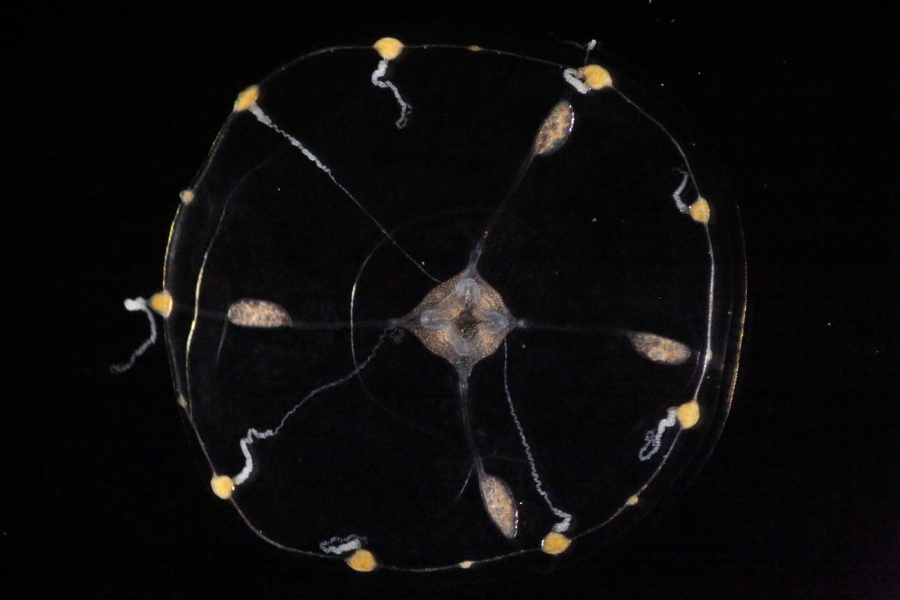Brady Weissbourd named Klingenstein-Simons Fellow
Three-year fellowship will support Weissbourd’s research on how the C. hemisphaerica jellyfish survives and thrives by constantly making new neurons.

Now, thanks to a prestigious Klingenstein-Simons Fellowship Award in Neuroscience, MIT Assistant Professor Brady Weissbourd will study how the tiny, transparent animals use this ability to build, organize, and rebuild a stable, functional, and robust nervous system throughout their lives.
“As we look more broadly across the animal kingdom it is amazing to see how similar the basic biology is of animals that look completely different — even jellyfish have neurons similar to our own that generate their behavior,” says Weissbourd, a faculty member in MIT’s Department of Biology and The Picower Institute for Learning and Memory, whose work to engineer genetic access to C. hemisphaerica in 2021 established it as a new neuroscience model organism. “At the same time, it could be just as important to examine what is different across species, particularly when it comes to some of the incredible capabilities that have evolved.”
Weissbourd is just one of 13 researchers nationally to be recognized with this fellowship, which provides $300,000 over three years. It will enable Weissbourd’s lab to tackle several questions raised by the jellyfish’s prodigious production of neurons. Where does the constant stream of newborn neurons come from, and what guides them to their eventual places in the jellyfish’s mesh-like neural network? How does the jellyfish organize these ever-changing neural populations — for instance, into functional circuits — to enable its various behaviors?
Another question hails from the surprising results of an experiment in which Weissbourd ablated the entire class of the neurons that the jellyfish uses to fold up its umbrella-shaped body — about 10 percent of the 10,000 or so neurons that it has. He found that within a week enough new neurons had taken their place that the folding behavior was restored. Weissbourd’s studies will also seek to determine how the animal can so readily bounce back from the destruction of a whole major neural network and the behavior it produces.
“We were studying the neural control of a particular behavior and stumbled across this shocking observation that the subnetwork that controls this behavior is constantly changing size and can completely regenerate,” Weissbourd says. “We want to understand the mechanisms that allow this network to be so robust, including the ability to rebuild itself from scratch. I’m very grateful to the Klingenstein Fund and the Simons Foundation for supporting our work.”
Publication: Brandon Weissbourd, et al., A genetically tractable jellyfish model for systems and evolutionary neuroscience, Science Direct (2023) DOI: 10.1016/j.cell.2021.10.021
Original Story Source: Massachusetts Institute of Technology

 Alerts Sign-up
Alerts Sign-up